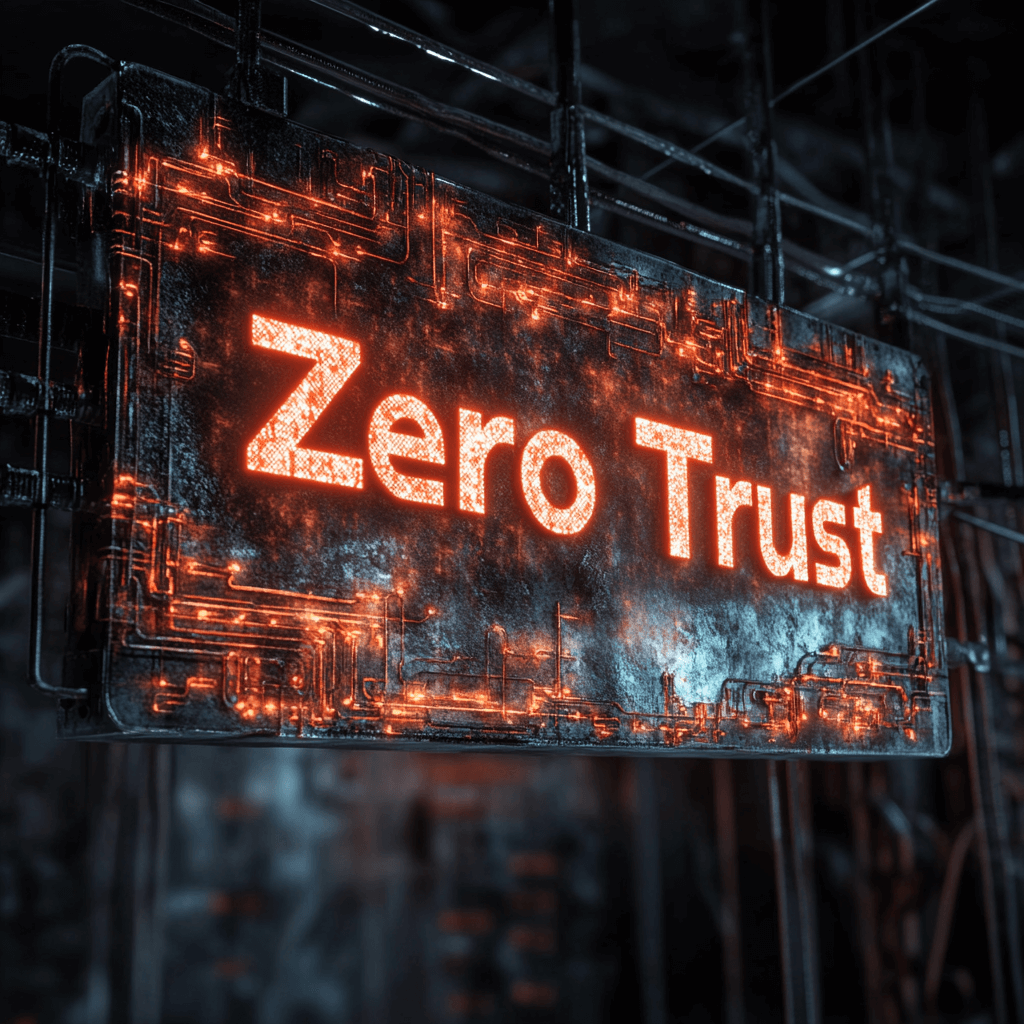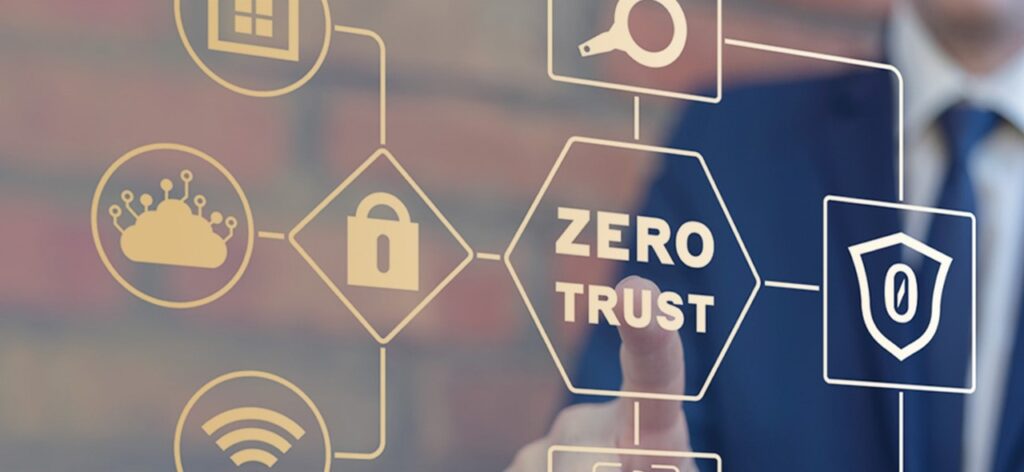Key Considerations for Selecting and Avoiding Common Pitfalls in Implementing Zero Trust Security Solutions
In today’s rapidly evolving cybersecurity landscape, Zero Trust security has emerged as a critical strategy for protecting enterprise assets. Unlike traditional security models that rely on implicit trust within a network perimeter, the Zero Trust architecture operates on the principle of “never trust, always verify.” This approach requires continuous authentication, rigorous access control, and strict enforcement of security policies to safeguard against potential threats. However, selecting the right Zero Trust solution involves more than just adopting the latest technology. It requires a comprehensive understanding of your organization’s needs and how to implement Zero Trust security effectively across your network. This article outlines the six key considerations for Navigating Zero Trust that every enterprise should evaluate when selecting a Zero Trust solution, ensuring you make an informed decision that bolsters your security posture.

6 Key Considerations for Selecting a Zero Trust Solution
When choosing a Zero Trust solution, it’s essential to consider several critical factors to ensure that you effectively implement Zero Trust security within your organization. Below are the six key considerations for Navigating Zero Trust:
Understanding Zero Trust Architecture and Principles:
Implementing a Zero Trust security model requires a deep understanding of Zero Trust architecture. This security approach eliminates the assumption of trust, shifting the focus from traditional security models to a comprehensive Zero Trust strategy. Ensure that the Zero Trust solution aligns with core principles such as least privilege, continuous authentication, and secure access.
Assessing Network Access and Endpoint Security:
Evaluate how the Zero Trust solution manages network access and secures endpoints. Implementing Zero Trust network access (ZTNA) ensures that access control is strictly enforced, reducing security complexity. This involves real-time verification of user identities and devices, securing both on-premises and remote access.
Authentication and Access Control Mechanisms:
Authentication is a cornerstone of Zero Trust security. The solution should offer robust, multi-factor authentication (MFA) and secure access controls that apply Zero Trust principles to every access request. This ensures that permissions are tightly controlled and continuously verified, enhancing the overall security posture.
Integration with Existing Security Stack and Compliance:
Consider how the Zero Trust solution integrates with your current security framework and supports compliance requirements. The solution should work seamlessly with existing firewalls, VPNs, and cloud security tools, while also helping to meet enterprise security and compliance standards.
User Experience and Security Policy Enforcement:
Implementing Zero Trust should not compromise the user experience. The solution must balance robust security controls with usability, ensuring that access policies are enforced without hindering productivity. Look for a solution that offers intuitive interfaces and minimal disruption to user workflows in order to Navigating Zero Trust implementation successfully.
Measuring Security Posture and Continuous Improvement:
Finally, ensure that the Zero Trust solution provides tools to measure and improve your security posture over time. This includes monitoring real-time security threats, verifying security and compliance, and ensuring that the Zero Trust model adapts to emerging cybersecurity challenges. Continuous assessment and optimization are key to maintaining a strong security stance.
By focusing on these key considerations, you can implement a Zero Trust security solution that not only strengthens your organization’s defenses but also enhances your overall security and compliance posture.

Key Concerns and Insights to Evaluating Zero Trust Solutions: 3 Use-Cases to Determine Zero Trust Architecture
Zero Trust is a crucial framework in modern cybersecurity, yet with numerous vendors claiming to offer Zero Trust solutions, enterprises often face significant challenges. These challenges include understanding the boundaries and integration requirements of these solutions, anticipating the necessary changes in processes or technology, and effectively measuring the success of Zero Trust implementations. Below, we address these concerns in detail, focusing on Navigating Zero Trust approach used by Warden.
1. Understanding Boundaries, Edges, and Integration Requirements to Implement Zero Trust
Concern: Enterprises need to clearly understand the boundaries of a Zero Trust solution, including what elements of their IT and security infrastructure are out of scope. Recognizing these boundaries is essential to plan for successful deployment and integration with other infrastructure components.
Insight: When evaluating Zero Trust vendors, it’s crucial to ask about the boundaries of their solution. Specifically, inquire about where the solution stops and where integration with other elements of your infrastructure is required. Warden’s approach emphasizes transparency in defining these boundaries, ensuring that enterprises understand exactly where Warden’s responsibilities end and where other security measures or integrations need to take over.
For example, Warden’s Zero Trust framework is primarily focused on securing the delivery mechanism and neutralizing threats at the most critical points of entry. However, Warden does not cover every aspect of an enterprise’s security needs. This is why it is essential to understand that elements such as certain data protection measures, third-party application security, or physical security controls may fall outside Warden’s scope and will require complementary solutions.
Understanding these boundaries allows enterprises to plan more effectively, ensuring that there are no gaps in their security posture. Warden’s emphasis on clear communication helps enterprises avoid surprises during deployment, facilitating smoother integration with existing infrastructure.
2. Preparing for Process and Technology Changes of a Zero Trust Model
Concern: Deploying new Zero Trust solutions inevitably brings changes to processes or technology within an enterprise. It’s important to anticipate these changes, understand their ripple effects, and ensure compatibility with existing components to avoid potential pitfalls.
Insight: Anytime you deploy new technology, changes are inevitable. With Warden, these changes are designed to be as seamless as possible, but it’s still important to ask the right questions upfront. Specifically, inquire about what processes or technologies typically need to be adjusted when deploying Warden’s Zero Trust solution.
Warden provides clear guidance on the expected changes, which might include adjusting network configurations to align with Zero Trust principles, integrating with existing identity management systems, or revising endpoint security protocols. Warden’s architecture is designed to minimize disruption, but understanding these potential changes is crucial to avoid any surprises that could lead to compatibility issues or operational bottlenecks.
Additionally, Warden helps enterprises identify potential areas where existing technology may be incompatible with new Zero Trust measures. This proactive approach ensures that enterprises can address these challenges early, preventing them from being “painted into a corner” where they face difficult trade-offs or operational inefficiencies.
3. Measuring the Success of Zero Trust Implementations – Principles of Zero Trust
Concern: Measuring the success of Zero Trust implementations is challenging. Enterprises need to understand the key metrics used by successful customers to gauge the effectiveness of their Zero Trust strategies.
Insight: Success in Zero Trust should be quantifiable, and enterprises should look for clear guidance from vendors on how to measure it. When working with Warden, enterprises can expect to receive detailed metrics that demonstrate the effectiveness of their Zero Trust implementation.
Warden’s customers typically measure success using three primary metrics:
-
Reduction in Attack Surface: By implementing Warden’s Zero Trust framework, enterprises often see a significant reduction in their attack surface, which is a critical measure of success. This is tracked by monitoring the decrease in potential entry points for attackers and the effectiveness of controls in mitigating those risks.
-
Incident Detection and Neutralization: Another key metric is the number of security incidents detected and neutralized by Warden’s solution. This includes tracking how quickly threats are identified and how effectively they are contained before causing damage.
-
Improvement in Network Visibility and Control: Finally, enterprises measure the success of their Zero Trust implementation by the increased visibility and control over their network. Warden provides tools that enhance monitoring capabilities, allowing enterprises to see and manage all network activity more effectively.
Warden provides comprehensive reporting tools that allow enterprises to monitor these metrics in real-time, helping them to continuously assess and improve their Zero Trust posture. By focusing on these measurable outcomes, Warden ensures that enterprises can clearly demonstrate the value of their Zero Trust investment.
Navigating Zero Trust: The Importance of Comprehensive Evaluation of Zero Trust Security Solution
Implementing Zero Trust security is more than just a technology shift; it’s a strategic move that transforms how organizations approach cybersecurity. By carefully Navigating Zero Trust concepts and considering the Zero Trust architecture, assessing network access controls, ensuring robust authentication, and prioritizing user experience, enterprises can create a security model that not only protects against current threats but also adapts to future challenges. Integration with your existing security stack and compliance framework is also crucial for a seamless Zero Trust implementation. As cybersecurity threats continue to evolve, selecting a Zero Trust solution that aligns with these key considerations will empower your organization to maintain a strong and resilient security posture.





